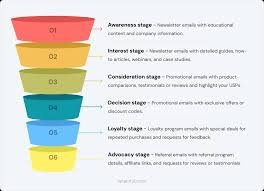An email marketing calendar is a strategic tool that helps you plan, organize, and execute email campaigns effectively. By scheduling your emails in advance, you ensure consistent communication with your audience, improve engagement rates, and maximize conversions.
Why Do You Need an Email Marketing Calendar?
An email marketing calendar keeps your campaigns structured and prevents last-minute content creation. Here’s why it’s essential:
- Better Audience Targeting – Helps you send the right email at the right time.
- Consistent Brand Messaging – Ensures a steady flow of communication.
- Higher Engagement & Conversions – Prevents email fatigue and optimizes timing.
- Improved Email Performance – Allows tracking of open rates, CTR, and conversions.
Steps to Create an Email Marketing Calendar
1. Define Your Email Marketing Goals
Before creating a calendar, set clear objectives:
- Increase brand awareness
- Boost website traffic
- Generate leads and conversions
- Improve customer retention
📌 Need help with goal setting? Check out our email marketing strategy guide.
2. Identify Key Email Campaign Types
A well-balanced email marketing calendar should include:
- Welcome Emails – Engage new subscribers immediately.
- Promotional Emails – Highlight special deals and offers.
- Educational Emails – Share valuable content, tips, and industry updates.
- Seasonal Campaigns – Plan emails around holidays or events.
- Re-engagement Emails – Win back inactive subscribers.

💡 Pro Tip: A diverse email strategy prevents content from becoming repetitive!
3. Choose the Right Email Frequency
How often should you send emails?
- Daily: For flash sales or urgent updates.
- Weekly: Ideal for newsletters and updates.
- Monthly: Best for in-depth content, reports, or customer highlights.
Avoid overloading subscribers with too many emails, as it may lead to unsubscribes.
4. Use an Email Marketing Calendar Template
Organize your emails using a structured format:
| Date | Email Type | Subject Line | Audience Segment | CTA | Status |
|---|---|---|---|---|---|
| 1st March | Welcome Email | “Welcome to Our Community!” | New Subscribers | Visit Website | Scheduled |
| 10th March | Promotional | “Exclusive 20% Off – Limited Time” | VIP Customers | Shop Now | Draft |
| 20th March | Educational | “5 Tips to Improve Your SEO” | Blog Subscribers | Read More | Sent |
5. Automate and Schedule Your Emails
Use email marketing tools like:
- MailerLite
- HubSpot
- ConvertKit
- Mailchimp
These platforms allow you to automate campaigns, schedule emails, and track performance.
6. Monitor & Optimize Email Performance
Regularly analyze email marketing metrics such as:
- Open Rates – Are people opening your emails?
- Click-Through Rates (CTR) – Are they clicking on your links?
- Conversion Rates – Are emails driving sales?
- Unsubscribe Rates – Are people leaving your list?
📊 Learn how to track email performance to improve results.
Final Thoughts
A well-planned email marketing calendar ensures a structured approach to email marketing, boosts audience engagement, and drives more conversions. By setting goals, planning content, and tracking results, you can create high-performing email campaigns.
📩 Want to improve your email marketing strategy? Contact us today!
📞 Call us at 0161 399 3517
📧 Email: Syed_66@hotmail.com

